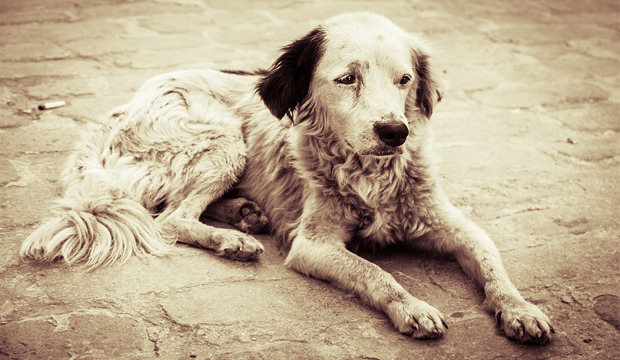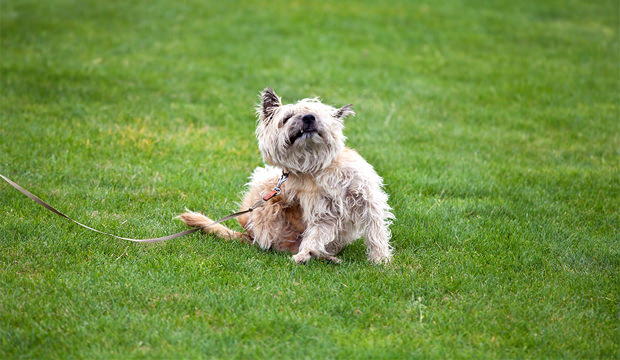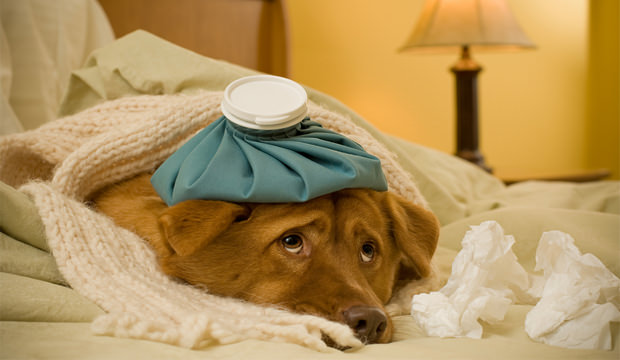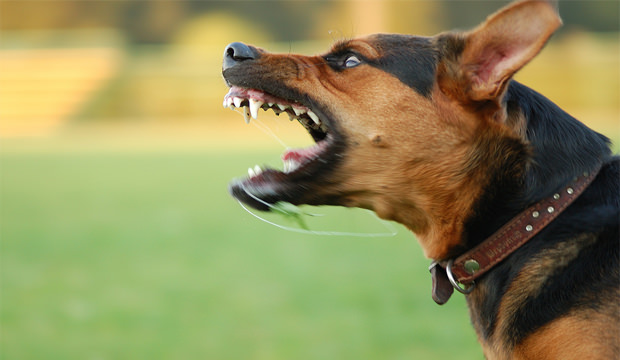
Sometimes it can be difficult to know how your pet is feeling. Animals can’t tell us what is wrong, so it’s up to you as a loving pet owner to look for signs that your pet isn’t feeling well. Here are 12 symptoms to look out for that could indicate that your dog or cat is under the weather.
1. Strange behaviors
Behavioral changes in animals can be one of the first signs that all is not well.
In particular, look out for dogs that suddenly lose interest in games and walks, as this sudden lack of enthusiasm could be their way of telling you that they don’t feel too good.
Animals that are suffering may also become restless and irritable. If your previously friendly dog wants to be left alone all the time, or your once independent kitty suddenly needs a lot of comfort and attention, consider taking them for a check-up.
Other behaviors to look out for include a pet that can’t seem to get comfortable and changes positions or moves to other locations frequently, uncharacteristically urinates in the house or seems to sleep much more than usual.
If you’re noticing changes in behavior, look also for changes in the physical appearance of your animal. Ears should smell clean, eyes should be bright, and coats should be shiny and full.
Your animal’s gums should be pink, her nose moist and cool. Feel for bumps under the skin that could signal a tumor, sniff your pet to detect any strange odors and take note of any changes in her weight.
2. Lost appetite

This isn’t necessarily a cause for great concern right off the bat, as there are a number of harmless reasons your pet may lack hunger.
Sometimes the cause of a lost appetite may be as simple as a picky pet turning his nose up at a new brand of food, or another member of the family filling him up with treats, unbeknownst to you.
However, if you notice that your pet no longer comes running at feeding time or seems to be eating a lot less than usual, then you should keep an eye on him.
Animals often lose their appetite when they have the common cold. Other signs of a cold include shivering and trembling, lethargy and a dry, warm nose, which may indicate a fever.
You can try shortening the duration of your pet’s cold by feeding him treats high in Vitamin C, making sure he’s drinking plenty of water and creating a warm, soft place for him to rest.
If your pet refuses food for more than a few days in a row, especially if other symptoms are present, take him to the vet, as it is possible that he has an infection or other health problem that needs attention.
3. Not drinking water

Think how thirsty you get after just one day without having a drink – most healthy animals will experience the same sensation of thirst.
If your pet refuses to drink anything, even with coaxing, then it is likely that she has a health issue that needs swift medical attention.
Dehydration itself is highly dangerous to animals, and can set in within 18 hours of not drinking water.
To determine if your pet is dehydrated, pull up on the skin of the back of her neck. If the skin doesn’t flatten back down immediately, but rather stays up for a moment, your animal is in dire need of water. A dehydrated animal will also exhibit dry, sticky gums.
If you can’t get your animal to drink water, try feeding her low-sodium, unflavored broth or non-citrus, diluted fruit juice. If she is drinking water, but not enough, combine one part of Pedialyte with one part water to help prevent dehydration from setting in.
If your pet is showing physical signs of dehydration and you can’t get her to drink water, take her to the vet, who will administer IV fluids and get to the bottom of what is bothering your pet.
4. Breathing difficulties

These symptoms can be signs of a number of health conditions, ranging from a chest infection or cold to allergies or other respiratory illnesses.
Dogs should breathe 15 to 20 times a minute at rest, and a cat should breathe 20 to 30 times a minute at rest.
If your pet is breathing a lot more or a lot less, or panting without physical exertion, he may need medical attention.
Cats and dogs can develop seasonal allergies to pollen and other allergens, or they may be reacting to something in your home, such as perfumes, chemical air fresheners or cleaning agents, all of which are highly poisonous to humans and animals alike.
Other potential problems that may result in the inability of your pet to breathe normally include the canine or feline version of the flu, a cold, heart disease, aspiration pneumonia and kennel cough.
Don’t leave a suspected cold or chest infection untreated, as swelling in the airways can lead to serious complications that could even threaten the life of your beloved pooch or kitty. See your vet to find out what the problem is and to get some medication to help your pet breathe a little more easily.
5. Vomiting

Usually, throwing up once or twice will get the offending food out of the animal’s system, and she should be feeling more like herself very soon.
Nevertheless, you do need to pay careful attention to this symptom in the event that the cause is ingested poison or a serious illness such as a viral infection, heat stroke or kidney failure.
If the vomiting continues throughout the day, look for other symptoms that could indicate something more serious than just an upset stomach, such as diarrhea, dehydration, lethargy, a change in appetite, decreased or increased urination and traces of blood in the vomit.
If any of these additional symptoms are present, and your animal vomits more than twice in a day or the vomiting lasts longer than one or two days, make an appointment with your vet for a diagnosis.
Meanwhile, try to get your animal to drink as much water as possible to prevent dehydration, which can greatly increase the complications of the illness that’s causing the vomiting in the first place.
6. Diarrhea

Occasional bouts of diarrhea can be a sign that your pet has been munching on things that he shouldn’t eat, and it usually clears up quickly.
Most of the time, diarrhea isn’t cause for concern.
While you’re in the “wait and see” period, there are a few things you can do to help your pet and try to find the cause of the ailment.
First, look around your house and yard to help determine whether your pet may have ingested a poisonous substance. If you suspect he has, take him to the vet immediately.
Otherwise, keep your dog as hydrated as possible and add a probiotic to his food or water to help restore his digestive system back to normal.
If you are able to rule out poisoning, feed your animal a can of pure pumpkin. Make sure it’s free of additives like sugar and spices. The pumpkin will give your pet a hefty dose of fiber to help end the diarrhea. Then put him on a 12- to 24 hour fast to empty him out.
If he continues to have diarrhea after fasting for that period of time, visit your veterinarian to rule out a serious condition.
7. Swollen tummies

It can also be caused by a number of different health issues, from constipation and gas bloating to a much more serious illness involving her organs.
To help you determine whether the bloating is a cause for concern, assess your animal’s general disposition.
If she’s lethargic or vomiting, or if her gums are blue, white or yellow rather than pink, there may be something more seriously wrong than a tummy full of food.
Straddle your pet as she’s standing and put one hand on either side of her underside. Apply a gentle squeezing pressure and then release, starting at the front and moving back.
If your pet exhibits signs of pain, or if you feel fluid rush back in after pressing, you should take her immediately to the vet. Likewise, if your animal attempts to vomit but nothing comes up, a visit to the vet is in order.
Large dog breeds that have a deep chest, such as German shepherds and Great Danes, are prone to a condition known as gastric dilatation, which is life-threatening. If you have one of these breeds, your best bet will be to forego the wait-and-see period and take her right to the vet.
8. Scratch, scratch, scratch

If you notice that your pet is scratching a lot more than usual, he might have picked up some very unwelcome guests, such as ticks, fleas or mites.
If you detect the offending critters, try bathing your pet with a commercial treatment to kill off the parasites.
You’ll also need to wash his bedding and any other textiles he has come into contact with in hot water, followed by a thorough vacuuming of your house to prevent re-infection.
Other causes of incessant scratching may include dry skin or dermatitis due to factors such as environmental elements, allergies or the lack of essential nutrients. First, try bathing your pet with a fragrance-free, moisturizing, oatmeal-based dog shampoo.
If that doesn’t seem to relieve the itching, try upgrading your dog’s food to a high quality brand that’s meat-based and made without grains. You can also try giving your pet a supplement to ensure optimum nutrition, which can help relieve some skin disorders.
If parasites and dry skin have been ruled out, it’s time to make an appointment with your pet’s veterinarian, who will conduct a battery of tests to determine whether the problem is bacterial, neural, parasitic or infectious, or the result of an allergic reaction to something in the environment.
9. Fever

First of all, you can feel the pet’s nose and behind its ears to see whether they feel hotter than they usually do.
The noses of cats and dogs should be cold and moist. If her nose is warm and dry, chances are, she has a fever.
But experts recommend that you don’t rely on the animal’s nose alone to detect a fever.
You can get a more accurate temperature value by using a digital rectal thermometer designed specifically for dogs. A dog’s normal body temperature ranges from 101 to 102.5 degrees. If your pet’s temperature is 103 degrees or higher, it’s considered a fever.
If it’s as high as 106 degrees, your pet is in imminent danger and needs medical attention immediately.
If you can’t get your dog to cooperate with the thermometer, you can look for other signs of fever, including lethargy, shivering, depression, vomiting or coughing, and a runny nose.
Seek advice from a vet when you think your pet is running a fever. You might need to administer antibiotics or other treatment to clear up the source of the infection that’s causing it.
10. Aggression

Usually, you can calm down an irritable pet by keeping him in a quiet place and giving him some space.
However, if your pet suddenly turns aggressive or even violent, then you should get in touch with your vet immediately.
Dogs who are normally complacent but suddenly become aggressive may be experiencing severe pain, and his aggression is meant to keep others from touching him. There is no wait-and-see period for a dog who suddenly acts aggressively for no apparent reason.
Unexplained, out-of-character aggression could potentially mean that your pet has been affected by rabies. This serious disease is relatively rare, but it can be fatal – not only to your pet, but also to any humans bitten by an infected animal.
Other signs of rabies include paralysis, fever, seizures, difficulty swallowing and lack of coordination. Get medical help for your pet immediately if you suspect rabies.
If your dog is so aggressive that you feel it unsafe to approach him, call animal control to come out and subdue and cage him, and take him to the vet. Dogs with suspected rabies infections are quarantined for ten days to confirm the diagnosis.
11. Wetting inside the house

Needing to urinate frequently can be a sign of a urinary tract, bladder or kidney infection, which will need to be treated with antibiotics.
Some of the causes of your pet suddenly wetting in the house include the onset of general anxiety, separation anxiety or the development of a fear of thunderstorms or loud bangs, such as cars backfiring or fireworks.
If your pet’s indoor urinating coincides with you leaving the house or in response to loud noises, consider a visit to the vet for advice about dealing with these issues.
If your pet begins peeing indoors, look first at her water intake. Dogs and cats that suddenly start drinking a lot more water than usual and urinating indoors could be suffering from diabetes, which causes extreme thirst.
Another cause of a thirstier-than-usual pet is a new medication or an increase in the dosage of an existing medication. The final thing to look out for is blood in the urine, which needs immediate attention from a vet.
12. Inability to urinate

The most likely cause is a painful condition called cystitis, in which crystals build up in the cat’s bladder.
The crystals move into the urethra, which blocks the tube completely so that the animal can’t urinate.
This problem is particularly common in male cats, but it can affect female cats as well.
Cystitis is generally caused by either a poor diet or an infection. If your cat’s cystitis is caused by an infection, the appropriate medications will be prescribed. If it’s due to nutritional issues, your veterinarian will make recommendations on how you can improve your cat’s health and prevent reoccurrences through diet.
Other symptoms of cystitis include the development of a negative association with the litter box, resulting in your cat peeing anywhere but the litter box. Blood in the urine is another telltale sign that your pet may be suffering from cystitis.
If you notice your cat making numerous trips to the litter box but not being able to produce any urine, call the vet. A plugged urethra can become life-threatening within as little as 24 hours if it’s not treated.
13. Bad Breath

Chronic bad breath may indicate that your dog needs better oral hygiene and a visit to the dentist, or it can signal a more serious condition such as a problem with the gastrointestinal tract, liver or kidneys.
Unusual breath odors with a sudden onset warrant a visit to the vet. Fruity smelling breath may indicate diabetes, especially if it’s accompanied by seemingly unquenchable thirst and more frequent urination.
Breath that smells like urine could indicate kidney disease, and mind-numbingly foul breath odors accompanied by vomiting, yellow eyes or gums, and a lack of appetite may signal a problem with the liver.
To keep your healthy dog’s breath smelling like a healthy dog’s breath, give him chew toys to strengthen his teeth and gums, and feed him a dental hygiene treat every day to clean his teeth and freshen his breath. Feed him high-quality food that’s easy to digest to prevent stomach issues that result in bad breath.
Brushing your dog’s teeth is an important part of her ongoing maintenance to promote good overall health. Toothbrushes and toothpaste designed especially for dogs are available at pet stores, and a twice-weekly brushing will help prevent gum disease and tooth loss as your dog ages. If you can’t brush your dog’s teeth for any reason, you should have it done professionally.
14. Nasal Discharge

Depending on the color, viscosity and duration of the discharge, your dog could simply have a common cold or he could have a more serious condition that requires medical intervention.
A discharge of clear, watery mucous accompanied by sneezing is likely due to an irritant in the nasal passages, and will likely work itself out within a few hours.
If the discharge isn’t accompanied by sneezing, it could mean that your pet is in an excited state or nervous, or it could be allergies or viral rhinitis.
If the discharge is accompanied by gagging and retching, the culprit is probably post-nasal drip, which should take care of itself. If the discharge is thick, your dog may be suffering from a bacterial or fungal infection and you should take him to see the vet.
A dog that discharges fluid from just one nostril may have a foreign object or substance in her nose, or she may have nasal fistulas or tumors.
Any of these conditions could damage the mucous membranes in the nasal cavities and produce blood-tinged discharge or an all-out nosebleed. A bloody nose could also indicate von Willebrand’s disease, which is a bleeding disorder, or it could signal hemophilia.
Yellow discharge accompanied by coughing and a fever may mean your dog has canine influenza and should be seen by the vet immediately.
15. Sneezing

Sometimes, sneezing can indicate a more serious condition that needs the attention of your vet.
Sneezing is an early sign of an irritation in the nasal passages. Occasional bouts of sneezing are perfectly normal, and they’re nothing to worry about.
Dogs have very sensitive noses, and irritants like perfumes, smoke, scented air fresheners and even hair spray can cause sneezing now and then.
However, if the sneezing is violent and uninterrupted, or if nasal discharge results from the sneezes, you may have a sick dog that needs medical attention.
Sneezing accompanied by watery discharge and rubbing of the face with paws could indicate canine atopy, which is a common type of dog allergy that results when her immune system overreacts to allergens in the air that are inhaled.
Prolonged sneezing can cause the nasal membranes to swell, causing uncomfortable congestion that may make your dog breathe loudly or sniffle. If the sneezing bouts last longer than a day or two, it’s best to take your pet to the vet to rule out serious conditions that require medical treatment.
16. Nosebleed

However, nosebleeds can also indicate trauma or parasites within the mucous membranes in the nose.
Bloody noses are often accompanied by sneezing, which increases the bleeding and may make the situation look worse than it is.
If your dog gets a nosebleed, the most important thing you can do at the outset is to keep your dog calm and quiet, and gently apply an ice pack, wrapped in a soft towel, to the bridge of his nose to help stem the bleeding.
If there’s a visible wound on or inside the nose, apply pressure to the cut with a clean gauze square or damp paper towel. If it’s possible that your dog has experienced an internal trauma, such as a fall, being hit by a car or getting into a fight with another dog, take him to the vet immediately to rule out a life-threatening condition.
If the nosebleed doesn’t seem to have an obvious cause, or if the bleeding isn’t stopping or slowing down after a half hour or so, take your dog to an emergency veterinarian to stem the flow and diagnose the cause.
17. Circling

If your dog is circling and seems to be dizzy, he may have labyrinthitis.
The labyrinth is part of the ear organ that’s responsible for balance. It acts sort of like a gyroscope to help the animal maintain balance, good posture and coordination. It’s also responsible for synchronizing the movement of the eyes.
The most common cause of labyrinthitis is an inner ear infection. Symptoms of an inner ear infection include abnormal posture, a tilted head, the lack of coordination, and a loss of balance.
Another cause for circling may be a condition called idiopathic vestibular syndrome, which mostly affects older dogs. The onset of this condition is generally very sudden and may include staggering, vomiting and dizziness to the point of incapacitation. In this case, an urgent visit to the vet is essential for recovery.
Complicating the diagnosis of circling, dizziness and other similar symptoms is the fact that these symptoms could also indicate a brain tumor, head trauma or poisoning. Be prepared to answer a number of questions from the vet along those lines to help him diagnose your pet more quickly and accurately.
18. Scooting

When a dog scoots along the floor dragging its bottom, there’s something irritating the anus.
The culprit could be an abscessed or blocked anal sac, which requires squeezing the sacs to empty them.
This is a common condition in smaller dogs, and brave pet owners can do this unhappy task themselves or take the dog to the vet or groomer to have the sacs expressed.
Other signs of blocked or abscessed anal sacs include chewing or licking the area, a swollen anus and difficulty pooping. To prevent this condition, feed your dog a healthy, high-quality diet and apply a hot, damp compress to the anus at the first sign of irritation to help clear the obstruction before it gets worse.
Another cause for scooting is fecal matter that’s trapped in the hair around the dog’s anus. This causes the hair to mat and pull, and the dog scoots along the floor in an attempt to remove the feces and relieve the itching.
You can help your dog by applying a hot, damp cloth to the area to soften and remove the feces, followed by a trim in the area to prevent a recurrence.
The most serious condition that might result in scooting is the presence of tapeworms in the dog’s stomach. Tapeworms result from swallowing fleas infested with tapeworm eggs.
You can help determine if tapeworms are the culprit by looking for tiny tapeworm segments around your dog’s anus. These segments look like very small grains of rice. Ridding your animal of tapeworms requires oral or injected medication. It’s important to protect your dog from fleas year round to prevent this condition.
19. Eating Poop

Most dogs that eat their own and other animals’ poop have acquired a taste for it since puppyhood. That’s right: they enjoy the taste of feces.
Others may eat poop out of sheer boredom, and still others may do it to hide the evidence of having gone number two on the living room floor, because they know you’re not going to be happy about that.
While poop eating is generally a harmless quirk dogs do because they’re dogs, a ravenous appetite for feces could indicate malabsorption syndrome. In an attempt to ingest more calories, instinct leads the dog to what is likely the only available food source, and that is poop.
It’s not a good idea to turn a blind eye to your dog’s poop-eating ways. Ingesting feces could result in an infestation of intestinal parasites, and any medications taken by the pooper could end up in your dog’s system and cause toxicity.
To prevent your dog from eating his own and other animals’ feces, keep your yard free of the offending material and make sure your dog has plenty of chew toys, treat puzzles and attention from you to combat boredom and take his mind off of his appetite for waste.
20. Gas

The most common cause of dog farts is ingesting air while wolfing down their food.
It also occurs with malabsorption syndrome, in which the gas is related to the incomplete digestion of carbohydrates.
A sudden onset of gas accompanied by abdominal discomfort, diarrhea or a loss of appetite is reason for concern, and a visit to the vet is in order to rule out serious conditions.
To help your healthy dog avoid gas pains and the resulting foul odors, feed him a low fiber diet and avoid giving him scraps of people food. If your dog is a voracious eater who will polish off a bowl of food before you’re done scooping it out of the bag, consider feeding him three smaller meals instead of one large one each day. This will help him swallow less air and prevent bad cases of gas.
To help reduce gas passing once your dog is already on a roll, you can feed her a dog charcoal-based biscuit or two to help absorb excess gas. Additionally, you can treat your dog with simethicone, an over the counter drug for humans that absorbs gas in the intestines. Ask your veterinarian about the appropriate dosage for your dog, based on his size and weight.

A,dog that. Chews holes in ur walls of ur house
The dog is starving feed it
10 week old border collie , not eating vomiting and losing weight, just wants to sleep!! Help please
The dog has parable and try using parvaid you can find it at a pet store
My dog has developed small bumps on his skin. He has short hair and they are all over his body. They have showed up in the last 24 hours. What could this be? The bumps seem to be a little sensitive.
my dog doesnt want to get out of his crate and he just wants to sleep what does it mean?
My 3month old puppy has been spinning in circles for 4rs her pupils are huge loss of balance
My dog seems to be acting differently. He doesn’t eat his old food, he won’t beg from the table anymore and many other things. Although he still has the same energy and still the pet I love. Does this count as weird behavior? I just don’t know if I should be worried about him being sick or not.
My dog is 11 years old for the last2 days she always takrs a walk and she got skunked about8 months ago and she still has a weird smell on her,i cant figure it out.I love her so much she is my best friend I have had since she was 6 weeks old.She is eating and drinking but dont seem to want to do anything,i have no money to take her to the vet could she just be having 2 off days?
Your dog is just old
It sounds like my dog will react the same way to being sick as me. He will start feeling miserable and grumpy with a fever or congestion and loose his appetite. All pretty straight forward. However, my dog has always been a picky eater. Sometimes he refuses to eat just because he doesn’t like the new dog food we bought. So, how will I tell when he is not eating because he is sick and when it is because he is just being picky?
We have a Stafford bull and all he dose is to walk round licking the floor so I am thinking his inside must be full of dog hair and what ever else he finds I have had dogs most of my life but I have never seen or heard or seen a thing like this
Try useing pumpkin in a can you can find it in the pet store this will help her insides
Signs of shortage of breath is what my wife saw in our dog. She thought the dog had an asthma attack and because of this she took him to the veterinarian hospital. We were glad she took him there because in reality he was having an asthma attack.
My dog has gone mad since he had his cone of biting and jumping and spinning around after his tail
Your dog is just tired
must you be hateful
My poor dog is sick
My 6 yr old pit mix doesn’t jump around and want to go outside when I ask her, and loss of appetite and shivering and teeth chattering, she is hiding under my bed for long periods of time. What do you think is wrong?
She is scared of u
My older dog has been trying to squeeze himself into tight places where he could get stuck. So far, we’ve gotten him out of them all, but can you give me clue why he’s doing this?
He is scared of you
my dog roams around restless in my bed, does not sleep
He needs attention
My 8 year old jack russell terrier suddenly want to be alone outside. I take her for long walks which see loves and for car rides which see love also. I bring her in but she just goes back out day or night. She comes inside to eat then goes back outside. She still likes to chase her ball inside or outside. I have checked her out to she if she might be sick and can find nothing wrong. This has only happened in the last 3 weeks. I have 2 cats bet they all get along okay
Well your dog is scared of your cat and needs attention because you are not giving her enough attention and love
My 9 week puppy is a little wobbly n now jus wants to lay down
Because she is a baby puppy
My Dog is throwing up every where and peeing everywhere in the house . SHe has the sign of allergies and dehydrate please tell what’s I need to do.
Got to the vet obviously smh
Thanks for this info. My dog is acting strange since this morning. He’s not eating or drinking too. I am now looking up some animal hospital to have him checked.
my dog is sick not eating and now is nipping when trying to pet him cant get comfy and just wants to be left alone why
My dog want eat all she does is laying around